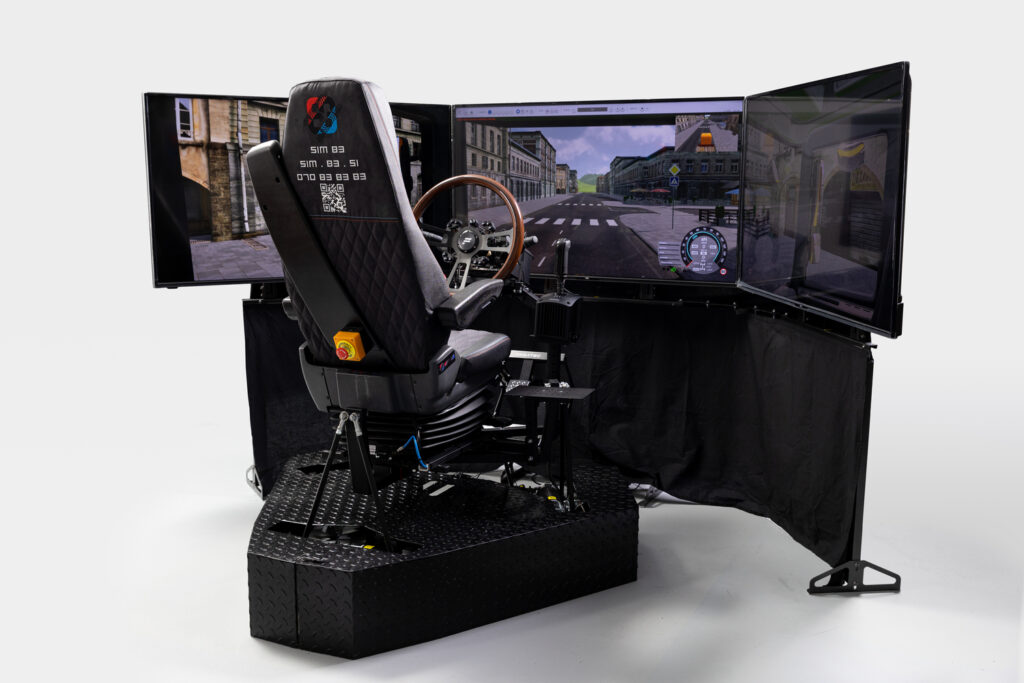Driving simulators such as the SIM83-MS06 have become an indispensable tool in vehicle development and testing, driver training and road safety research. They offer a safe and controlled environment to replicate driving scenarios that can be manipulated to test different aspects of driver behaviour, vehicle performance and more. But what exactly does a driving simulator consist of? Let’s take a look at the essential components of a modern driving simulator.

Hardware components
- The cockpit or driver’s cabin: This is the physical structure where the driver sits and operates the simulator. It includes the driver’s seat, seat belts and all controls as in a real vehicle.
- Moving platform: Many driving simulators use a moving platform to simulate the sensation of movement. A common type is the Stewart platform, also known as a hexapod platform, which can move in six degrees of freedom (up and down, side to side, forward and back, as well as tilting, rolling and yawing) to mimic the motion of a car.
- The visual system, a key element of the experience, can range from a single monitor to a series of displays providing a 180-degree or even 360-degree field of view. Some simulators also use virtual reality goggles for an even more immersive experience.
- Audio system: Realistic sound is essential for the user as it can provide critical feedback. Engine noise, tyre sounds on different road surfaces and environmental sounds all contribute to the realism of the simulator.
- Controls: These include the steering wheel, pedals and gear lever, which are often actual parts of the car or very accurate replicas that provide realistic feedback and force.
- Computer systems: One or more powerful computers are required to run the simulation software, process driver data and control the visual and motion systems.
Software components
- Simulation software: This is the heart of the driving simulator, responsible for creating the virtual environment, vehicle dynamics and driver interactions. Based on driver inputs and simulated physics, it calculates how the vehicle should behave.
- Scenery and environment creation: software that creates a virtual world including roads, traffic, buildings and weather conditions. It ensures that the driving experience is as close to real life as possible.
- Data acquisition and analysis tools: These tools collect data on driver performance, vehicle behaviour and any other relevant metrics for analysis.
- Telemetry algorithms: These algorithms translate vehicle motion into commands for the motion platform, ensuring that the driver experiences accelerations and motion very similar to what they would experience in a real vehicle.
Integration and validation
The integration of these components is a complex process that requires careful calibration and validation to ensure that the simulator behaves as realistically as possible. The aim is to create a tool that not only looks real, but also accurately represents the physics of driving, from the grip of the tyres on the road to the way the car responds to steering and braking.
Driving simulators are a testament to the intersection of technology and human experience, providing a platform on which both can be studied and improved. Whether it is vehicle development, driver training or research, the components of a driving simulator work in harmony to create an invaluable tool for the automotive industry.
Driving simulators are complex systems that require a combination of high-tech hardware and sophisticated software to create a realistic driving experience. They are important for the development of automotive technology and for improving driver safety and efficiency. As technology evolves, so do the capabilities and applications of driving simulators, paving the way for even more innovative uses in the future.




